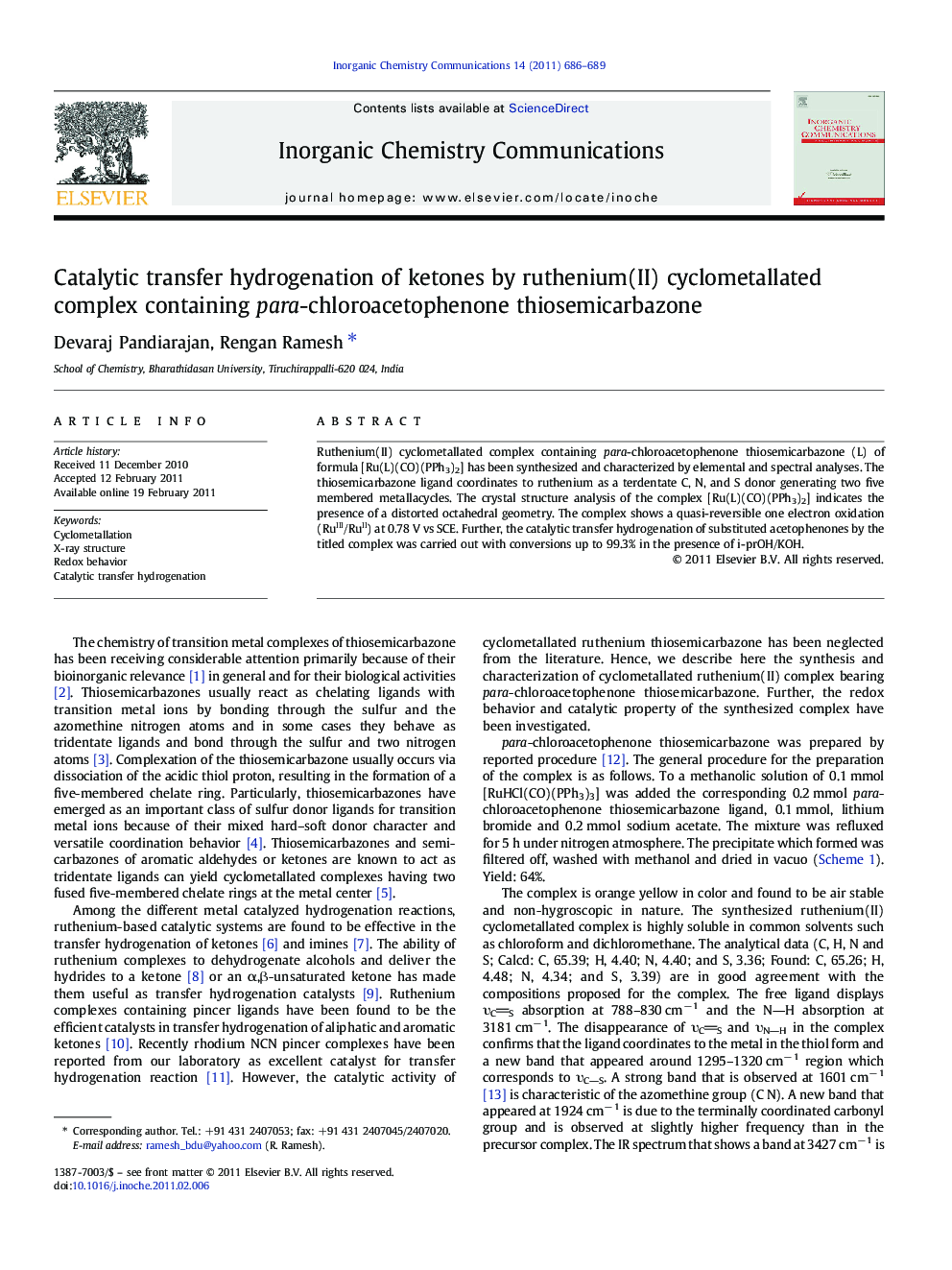| Article ID | Journal | Published Year | Pages | File Type |
|---|---|---|---|---|
| 1302167 | Inorganic Chemistry Communications | 2011 | 4 Pages |
Ruthenium(II) cyclometallated complex containing para-chloroacetophenone thiosemicarbazone (L) of formula [Ru(L)(CO)(PPh3)2] has been synthesized and characterized by elemental and spectral analyses. The thiosemicarbazone ligand coordinates to ruthenium as a terdentate C, N, and S donor generating two five membered metallacycles. The crystal structure analysis of the complex [Ru(L)(CO)(PPh3)2] indicates the presence of a distorted octahedral geometry. The complex shows a quasi-reversible one electron oxidation (RuIII/RuII) at 0.78 V vs SCE. Further, the catalytic transfer hydrogenation of substituted acetophenones by the titled complex was carried out with conversions up to 99.3% in the presence of i-prOH/KOH.
Graphical AbstractRuthenium(II) cyclometallated complexes derived from C-H activation of thiosemicarbazone efficiently catalyzes a series of acetophenones and the maximum conversion was found to be 99.3%.Figure optionsDownload full-size imageDownload as PowerPoint slideResearch Highlights► This work aims to generate air stable M-C bond ie, organometallic species. ► Synthesized complex has been characterized by spectral and analytical methods. ► Cyclometallation was achieved via C-H activation of TSC ligand by ruthenium complex. ► Transfer hydrogenation of acetophenones by ruthenium complex has been studied.
